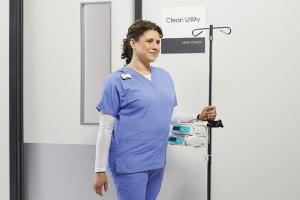Access control devices improve hospital safety

Keeping patients, staff and visitors safe while maintaining a health care environment that is comfortable and conducive to healing requires a delicate balance between freedom and security.
The challenges posed by hospitals are many. Large areas are open to the public, other wings and sections are controlled but still largely available, and specific rooms and storage areas require high levels of security.
The good news is that innovations in locks, entry and exit devices, door alarms and other access control systems can help facility managers meet this challenge.
Need for safety
The need for safety is required for those who may become the subject of a patient or family member’s ire, according to Mark J. Berger, president and chief product officer of Securitech Group Inc., Maspeth, N.Y. Safe havens take on several different forms.
“Emergency rooms now have secured doors providing a barrier between the intake or waiting room areas and the treatment areas,” Berger says. “We have seen full enclosures where staff is protected behind Plexiglas before allowing patients in to see a nurse or doctor in the treatment area.”
Emergency rooms, physician areas, intensive care units and behavioral health departments are among the areas that demand greater security. What’s more, workplace violence against health care workers is on the rise. In order to keep staff, patients and visitors safe, more hospitals are investing in physical security measures throughout their facilities.
“Most of this investment is going toward risk assessment and staff training, but there has been an increase in upgrading to locks that are equipped with ‘shelter-in-place’ capabilities,” says Tom Morgan, director of business development for health care at Assa Abloy Opening Solutions, New Haven, Conn.
Greater demand for security recently has been seen in pharmacies due to updated compliance standards, according to Dino Coliano, national health care business leader at Siemens Smart Infrastructure USA, Buffalo Grove, Ill.
“There is a new focus on adding cameras and access control technology in pharmacies, especially in hazardous drug compounding and storage areas,” Coliano says. “Other sensitive areas adding access control systems include nurseries, birthing units and, more recently, executive suites and key personnel offices.”
‘Internet of things’
The internet of things continues to play a big role in improving access control in health facilities, and there is more systems integration across the board. Advances in information technology allow for easier integration of access control into building security systems.
“Access control tools such as locks, exit devices and door alarms have evolved to meet the changing needs of hospitals in a world where the threat of terrorism is ever-present,” says Tim Shafer, marketing manager at Detex Corp., New Braunfels, Texas.
The internet of things gives facility managers the ability to integrate traditional security solutions with other devices and software such as network camera analytics, HVAC and smart locks.
“The internet of things has made the use of access control more widespread and helps decrease the spread of disease, a major concern in hospitals,” says Paul Baratta, segment development manager for health care at Axis Communications Inc., Chelmsford, Mass. “Card readers that allow doors to be opened automatically for authorized users translates to fewer physical touch points such as door handles, push bars or keypads that harbor germs.”
As more devices join the network and communicate with one another, new solutions are improving the ability to deliver predictive analytics. Key control can be a vital element in this network by providing insight on traffic to critical storage areas and medication closets, according to Tim Purpura, vice president of sales and marketing, Morse Watchmans Inc., Oxford, Conn., a manufacturer of key control systems.
“By integrating a key management solution with other security and business systems, facility managers can create rules and policies that specifically relate to the challenges and pain points experienced by their organization,” Purpura says. “This makes it possible to configure systems to notify management when the threat level has risen due to an identified event such as a new employee attempting to remove a specific key.”
New equipment
New access control equipment recently introduced to the hospital market encompasses many areas, ranging from door access devices and locks, alarms and egress devices to cloud-based monitoring and activation systems.
The Detex AT-5200 Tailgate Detection System assures that only one person can enter a secured doorway for each authorized card read. Compatible with most reader technologies, the AT-5200 is easy to retrofit, Shafer notes. This optical security system, which uses infrared sensor beams to detect tailgating, is suitable for areas that require tight security.
Securitech Group Inc. offers Safebolt, an easy-to-install, code-compliant barricade lock designed to work in conjunction with cylindrical locksets. Suitable for “shelter in place” situations, Safebolt is engineered to boost traditional doors that are locked by a key from the exterior, securing occupants at the press of a button. A visual indicator notifies occupants that the door is bolted and a single motion retracts the bolt and latch from the inside. Staff and first responders can enter by key.
Dormakaba, Indianapolis, offers the Switch Core by Best, a small-format interchangeable core that brings electronic access control to existing mechanical locks in minutes. Components include a cloud back end and a switch bridge that facilitate integration to physical access control systems (PACS), providing management of access control from one location in near real time.
“Thanks to the small-format interchangeable core form factor, electronic access control can be deployed to hospital locations not previously possible, such as areas that house sensitive records and medications,” says Dan Stewart, business development lead. “Since activity is logged into the PACS in near real time, the system allows auditing of these locations, thus increasing accountability.”
Pharmaceutical storage in dispensaries that contain controlled medications requires a high level of security, according to Bryan Sanderford, national sales manager at Dortronics Systems Inc., Sag Harbor, N.Y. His company has developed a series of door interlock controls that allow access only to authorized persons and ensure environmental isolation. The interlocks also can provide control of airlocks for compounding areas.
“Sometimes door locks are remotely controlled and monitored from guard consoles with indicating LEDs and alarm sounders,” Sanderford says. “They also may be monitored to detect doors that are propped or held open too long. Dortronics Systems offers local door alarms and multizone annunciators for these applications.”
The KL1100 lock from Codelocks Inc., Rancho Cucamonga, Calif., provides access to cabinets and lockers without the use of keys. “This is important for providers who need quick access to items stored in locked cabinets and who may be carrying supplies at the time. An optional ADA-compliant pull for this product makes it easier to open the door hands-free,” says Matt Welty, general manager.
Codelocks also offers access control devices designed to improve operations at offsite health care facilities.
“The CL5500 smart lock allows users in remote locations to manage access rights to a lock without the need to have any communication links to the lock,” Welty says. “With the optional Wi-Fi bridge for buildings with Wi-Fi available where the lock is installed, the manager can perform actions from a remote location.”
Wireless operation
Assa Abloy offers a broad range of Aperio wireless locks that are designed to enhance security and compliance in health care facilities. Recent updates include the third generation of the K100 Aperio Wireless Cabinet Lock, which is used for securing pharmaceuticals and other substances at medical facilities around the country, providing physical access control, auditing, accountability and loss prevention. The company also has introduced the R100 wireless reader, which can be attached directly to glass doors to attain a clean aesthetic.
Intelligent keys are a significant development for keyed openings because they eliminate the need to re-pin mechanical lock cylinders and the potential loss of a master key, according to Morgan.
“Assa Abloy group brand Medeco offers various intelligent key solutions that can be programmed for specific days and hours, and record when and where they’ve been used,” Morgan says. “This enables full accountability, reduces loss and liability, and improves the security of every opening, drawer, cabinet and padlock where a key is normally used.”
Axis Communications Inc. offers door controllers and 2N network door stations that combine video surveillance, two-way communication and remote entry control in a single device. Door stations help to improve on existing video surveillance capabilities by allowing personnel to see who is calling at eye level, even under challenging light conditions.
The DoorPoint app from Galaxy Control Systems, Walkersville, Md., allows users to remotely lock, unlock and pulse doors, and view door status and activity reports via its System Galaxy software. DoorPoint also allows users to save certain doors and clusters for easy access, which streamlines operations. In an emergency, the app allows security personnel to activate and reset crisis modes and to view current crisis-mode status.
PersonPoint, another offering from Galaxy Control Systems, allows authorized users to activate and deactivate cardholders remotely, with the added benefit of viewing email activity reports. “Users can search for cardholders by name, department or other data fields, enhancing the effectiveness of access control software,” says Rick Caruthers, president.
Siemens Smart Infrastructure USA offers solutions that tie access control to wireless locks, connecting doors, cabinets and other critical locking assets. The company also offers biometric access control that, for example, allows surgeons to gain access to operating rooms even though they may be wearing surgical gloves.
Siemens also has combined video and access control into one screen operating interface. This allows facility managers to identify who is gaining access to where, without having to go to multiple security video and access control systems.
Future advances
What future advances lay ahead for access control technology in hospitals?
Baratta of Axis Communications predicts that more audio and analytics will be integrated with access control systems, providing further protection and insight into who is coming and going throughout a facility.
Caruthers of Galaxy Control Systems says that door access control will increasingly rely on biometrics. “It is the most secure option because biometric identification is impossible to forge,”
he says.
Neal Lorenzi is a freelance writer and regular contributor based in Mundelein, Ill.
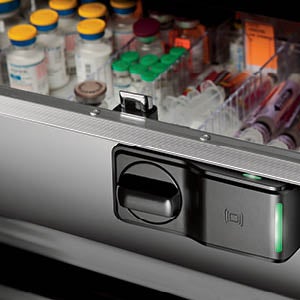
NO WIRES
Wireless locks such as the HES K100 extend access control to cabinets, lockers and drawers. Assa Abloy
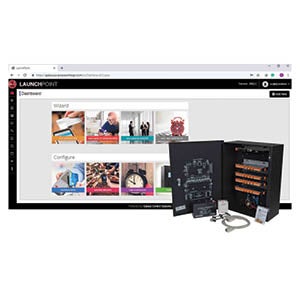
ADDED EFFICIENCY
DoorPoint allows users to save certain doors and clusters for easy access, which helps to streamline operations. Galaxy Control Systems
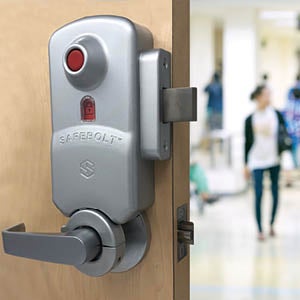
LOCKED DOWN
Safebolt is a code-compliant barricade lock designed to work in conjunction with cylindrical locksets. Securitech Group Inc.
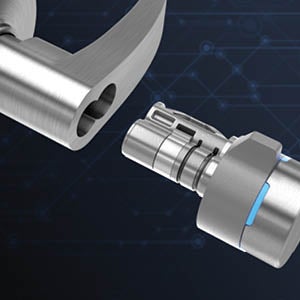
EASY UPGRADES
The Switch Core by BEST, an interchangeable digital core, brings electronic access control to existing mechanical locks in minutes. Dormakaba
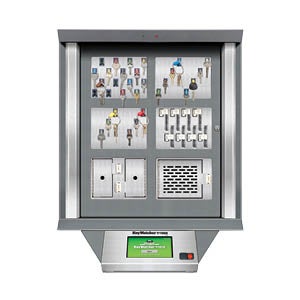
KEY KEEPER
KeyWatcher Touch is a modular, scalable key control and management solution with intuitive, time-saving features. Morse Watchmans Inc.
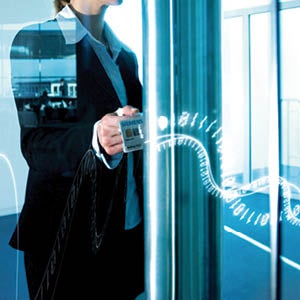
TIED TOGETHER
Siemens solutions tie access control to wireless locks, connecting doors, cabinets and other critical locking assets. Siemens Smart Infrastructure USA
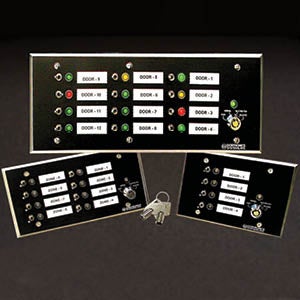
SOUNDING OFF
Local door alarms and multizone annunciators are designed to meet a variety of security applications. Dortronics Systems Inc.
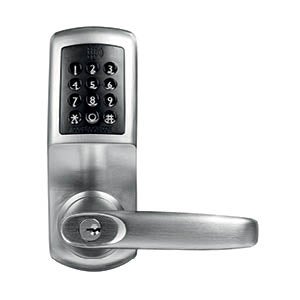
REMOTE CONTROL
The CL5500 smart lock gives facility managers access to locks from remote locations. Codelocks Inc.
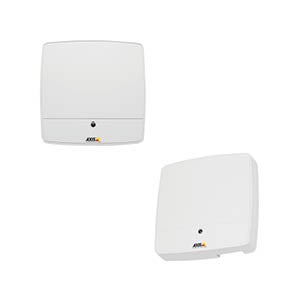
FOR FLEXIBILITY
The AXIS A1001 Network Door Controller is based on an open platform and can be used with third-party software. Axis Communications Inc.

ONE AT A TIME
The AT-5200 Tailgate Detection System assures that only one individual can enter a secured doorway for each authorized card read. Detex Corp.




